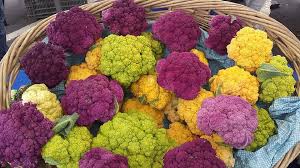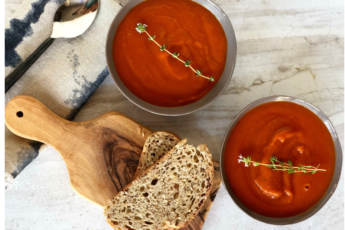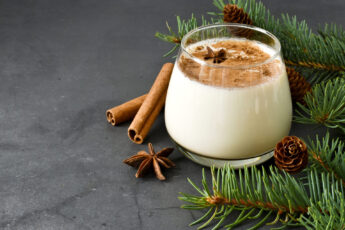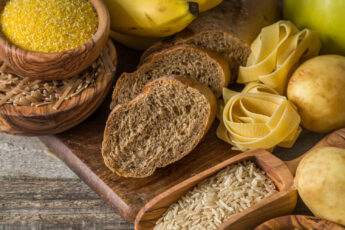Ever wonder what nutritionists talk about when they get together? Inevitably, talk turns to food, but not what you might expect.
We may be familiar with the latest research and science, but we’re people, too, and we can yak it up with the best of them. I asked several top-notch registered dietitian/nutritionists (RDNs) to react to the statement: “I can’t believe that food ever became popular”. Here’s what they said:
Kale’in Me!
Number one response. “How the heck did that heinous weed become everyone’s darling?” asked Amy Myrdal Miller, of Farmer’s Daughter Consulting. Yes, Amy knows kale is nutritious. She hates it anyway.
Keri Gans doesn’t mind kale, but adds, “I never understood why kale became so popular mainly because, for myself, and many others I know, it’s rather bitter tasting. And with other nutritious leafy greens available – hello spinach – it just makes me wonder.”
 ‘flower Power
‘flower Power
As much as Myrdal Miller hates kale, “I’m delighted so many chefs and consumers have embraced and totally fallen in love with cauliflower, my favorite vegetable.”
Indeed, chefs have become some of this cruciferous superfood’s biggest fans. “Who ever thought cauliflower would rise to the status of being nestled into a pizza crust?” says Bonnie Taub-Dix, author of Read it Before You Eat It – Taking You from Label to Table. “Cauliflower pizza is on fire on Instagram and in foodies’ kitchens everywhere, especially since Paleo and Keto diets have also risen in popularity.” She noted though, that although a cauliflower pizza crusts add nutritional value, “they’re not necessarily lower in calories. I add egg, cheese, herbs and nuts to create my crust.”
Toby Amidor, author of best-selling The Easy 5-Ingredient Healthy Cookbook, agreed, noting that she loved how loaded it is with nutrients like vitamin C and K, numerous B-vitamins, and fiber, and has anti-cancer properties. “However, I’m not always a fan of its flavor especially when served raw like in a salad. I was surprised when it gained popularity as a meat replacer (such as in cauliflower “steak”) and grain replacer (such as riced cauliflower or cauliflower risotto).” That baffled me also. Great as cauliflower is, it’s low in protein, so swapping out some lean beef for cauliflower requires some other protein source for the meal. I love roasting the colored varieties – they’re gorgeous, edible art.
Kombucha: #Thisbrewmaynotbebestforyou
According to Leslie Bonci, owner of ActiveEatingAdvice.com trying to make this fermented, probiotic drink at home, “could be a food safety concern. “Why not eat fermented vegetables like kimchi to get more fiber, and yogurt or kefir for protein?”
 Taking a pinto for a spin
Taking a pinto for a spin
Robyn Flipse, of TheEverydayRD.com, said, “The humble bean gets my top vote as the nutrient-rich food most deserving its new-found popularity!” While not fond of their “less appetizing nomenclature, ‘pulses’” or the confusing “legumes”, she’s glad more consumers and chefs are taking their “pulse” at mealtimes now.
Flipse loves that beans are now known as much for being “culinary chameleons that can be blended into almost any recipe, available all year round with a long shelf life in cans or bags and easy to prepare” as for their traditional budget-friendly advantages. Abundant research has clearly documented, “how much nutritional value they add to any dietary pattern or simple meal.”
Chia Whiz, It’s Popular
How did chia seeds go from holiday joke gift to being a treasured ingredient in smoothies and oatmeal? Bonci is a huge fan of chia (and of rhyming). One of her Bonci-bites: “We-a love chia! We feed the need with this seed! Fiber and omega-3, make chia good for me!” She’s right – chia is a nutrient powerhouse and, like many seeds, it’s versatile. Chia makes far better as a food than a “pet”!





